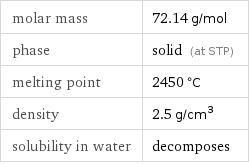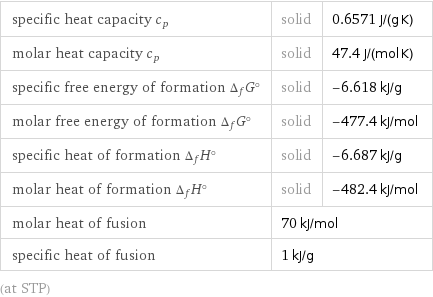Input interpretation

calcium sulfide
Chemical names and formulas

formula | CaS name | calcium sulfide IUPAC name | thioxocalcium alternate names | calcium sulphide | sulfanylidenecalcium | thioxocalcium mass fractions | Ca (calcium) 55.6% | S (sulfur) 44.4%
Lewis structure

Draw the Lewis structure of calcium sulfide. Start by drawing the overall structure of the molecule, ignoring potential double and triple bonds: Count the total valence electrons of the calcium (n_Ca, val = 2) and sulfur (n_S, val = 6) atoms: n_Ca, val + n_S, val = 8 Calculate the number of electrons needed to completely fill the valence shells for calcium (n_Ca, full = 4) and sulfur (n_S, full = 8): n_Ca, full + n_S, full = 12 Subtracting these two numbers shows that 12 - 8 = 4 bonding electrons are needed. Each bond has two electrons, so in addition to the 1 bond already present in the diagram add 1 bond. Identify the atoms that want additional bonds and the number of electrons remaining on each atom: Fill in the 1 bond by pairing electrons between adjacent highlighted atoms: Answer: | |
Basic properties

molar mass | 72.14 g/mol phase | solid (at STP) melting point | 2450 °C density | 2.5 g/cm^3 solubility in water | decomposes
Units

Solid properties (at STP)

density | 2.5 g/cm^3
Units

Thermodynamic properties

specific heat capacity c_p | solid | 0.6571 J/(g K) molar heat capacity c_p | solid | 47.4 J/(mol K) specific free energy of formation Δ_fG° | solid | -6.618 kJ/g molar free energy of formation Δ_fG° | solid | -477.4 kJ/mol specific heat of formation Δ_fH° | solid | -6.687 kJ/g molar heat of formation Δ_fH° | solid | -482.4 kJ/mol molar heat of fusion | 70 kJ/mol | specific heat of fusion | 1 kJ/g | (at STP)
Chemical identifiers
![CAS number | 20548-54-3 PubChem CID number | 30182 PubChem SID number | 24865657 SMILES identifier | S=[Ca]](../image_source/6cd71e481bbde296cc6593c8e7c1dd52.png)
CAS number | 20548-54-3 PubChem CID number | 30182 PubChem SID number | 24865657 SMILES identifier | S=[Ca]